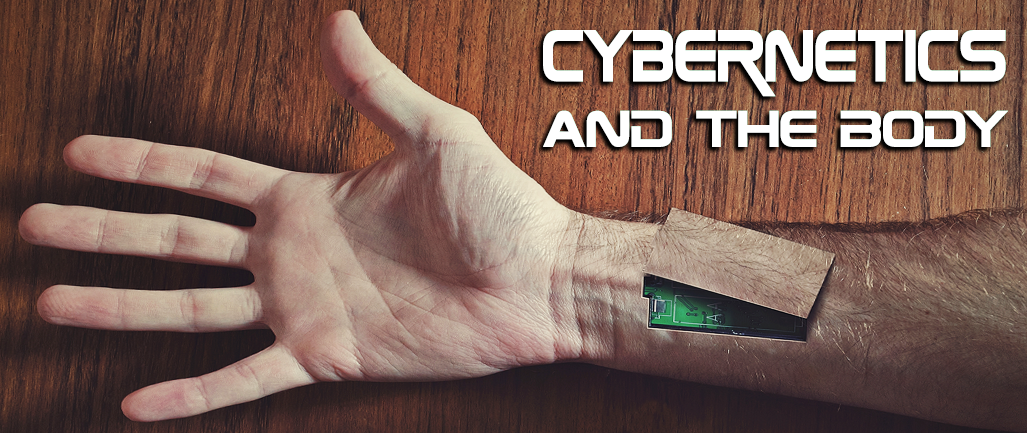 One of the staples of science fiction literature has long been the cyborg. Part man, part machine, the cyborg often serves as man’s triumph over the limitations of the physical body. From Luke Skywalker’s robotic hand to the more malevolent “upgrades” of Dr. Who’s Cybermen, the fascination and fear of cybernetics has inspired authors to wonder what it means to replace our bodies.
One of the staples of science fiction literature has long been the cyborg. Part man, part machine, the cyborg often serves as man’s triumph over the limitations of the physical body. From Luke Skywalker’s robotic hand to the more malevolent “upgrades” of Dr. Who’s Cybermen, the fascination and fear of cybernetics has inspired authors to wonder what it means to replace our bodies.
All of this, of course, is still safely in the realm of science fiction, at least for the moment. One might argue that cybernetics have existed for years in the form of artificial hearts and prosthetic limbs, but recently they’ve begun to develop in ways that were previously impossible.
From Fiction to Fact
In 2008, researchers created a functional robotic arm that responded to nervous system signals from nerves that previously controlled the patient’s now–absent biological arm. By segmenting the pectoral muscle and routing those nerves to those segments, researchers were able to build an arm that can detect movement in those segments, triggering the prosthetic.
Essentially, the patient “moved” his arm, the muscle moved, and the arm moved. That’s not too far off from the way our bodies function as God made them.
More recently, Battelle, a bioengineering firm, has created and tested Neurolife. Neurolife removes the muscular portion of the equation by implanting an array of sensors into the patient’s motor cortex.
This allows for a scenario in which the patient simply thinks and moves his limb. It’s far from perfect, of course. At present, it still requires significant calibration and more processing power than is easily portable, meaning the limb won’t work outside of the laboratory setting.
These limitations, however, are likely to be overcome in the coming months and years as processors improve and algorithms are refined.
Why Do We Care?
On first glance, there’s nothing much here but some shiny technology. There’s definitely that, of course, but there’s also an interesting world of ethical scenarios lurking below the surface here.
The most basic uses are pretty simple for us. When someone loses a limb or a body part through disease or accident, we embrace the medical technology that allows the person to be made whole, assuming the technology itself is ethical in nature.
The principle of ethical technology is at the heart of the embryonic stem cell debate; we have no significant concern with stem cell research or even therapeutic techniques, as long as they don’t depend on the destruction of babies, even in embryonic form. Recent advances in adult stem cell harvesting and reverse differentiation have made the matter of embryonic stem cells a moot point in the scientific community.
If a technology is worth developing, it’s worth taking the time to develop it in a way that honors life as sacred and into a technology that can be applied without causing significant harm. As Christians, we cannot argue that the ends justify the means, as if one can do good through evil acts.
Because the current research seeks to restore the body, we have no concern, and even embrace it as a wonderful step forward in healing injuries that were previously disabling. But one always wonders what the next step will be.
At what point does the desire to repair or restore become the desire to upgrade and expand? A decade from now, will we see a scenario in which the steel mill requires that workers be fitted with expensive prosthetics to withstand the heat and weight of the workload, even if they are otherwise healthy?
When we begin to electively replace parts of ourselves, do we lose something of what it means to be human?
The View from Scripture
The Bible is, not surprisingly, silent on the use of cybernetics or prosthetics of any sort. But it is not silent on the nature of our bodies. They are temples to the Holy Spirit (1 Cor 6:19–20); created by God in His image (Genesis 1:27); lost in the fall, and restored in the cross, and are even a metaphor for the nature of the Church (1 Corinthians 12). They age, they falter, and in the end, they die.
I won’t for a moment argue that death is natural (it’s not) or that it’s not the enemy (it is), but I will argue that attempts by technology to overcome death are ultimately doomed to failure. The only escape from death is found in resurrection, and I suspect we will be called upon to bear witness to that reality in the coming decades.
I’m not sure I’ve quite come down on any firm rules for the future use of cybernetics. Certainly, some part of that will depend on how the technologies get used and the whys behind those uses. Those uses that seek to restore and to heal we embrace with enthusiasm.
We should, however, be very careful when we seek to replace or improve on what God has given us.
What are your thoughts on the use of cybernetics? What are some ways you've heard of them being utilized?
Did you enjoy this topic? Check out more topics at the Technology & Your Ministry blog!
{{cta('35e945a3-57b9-4426-b284-53c61bf91951')}}























